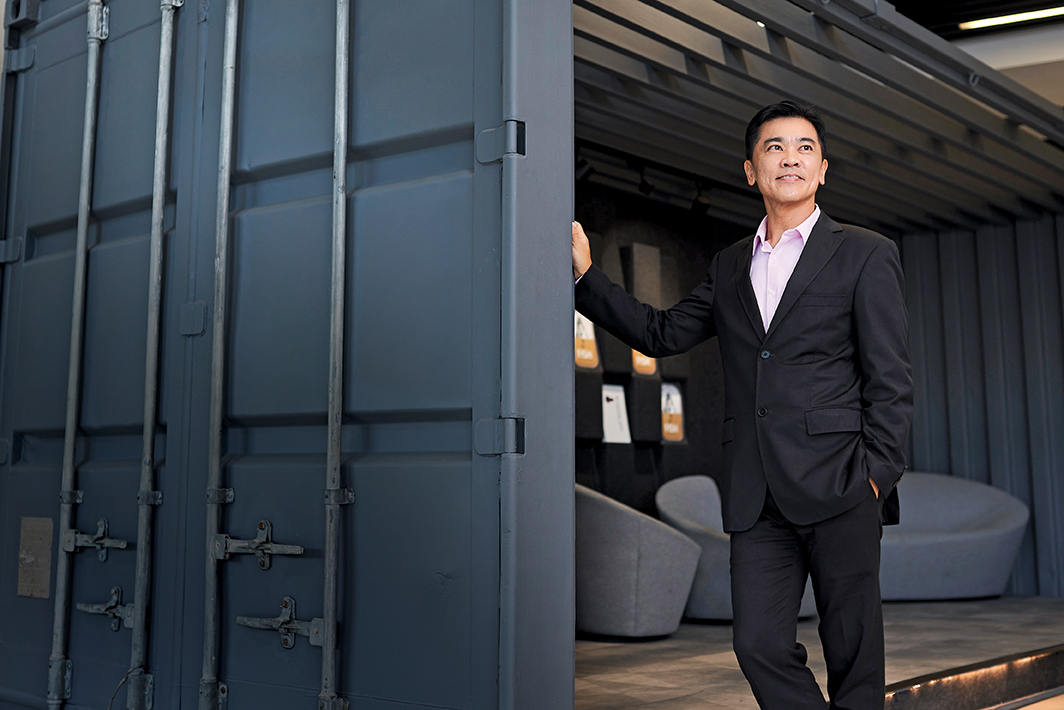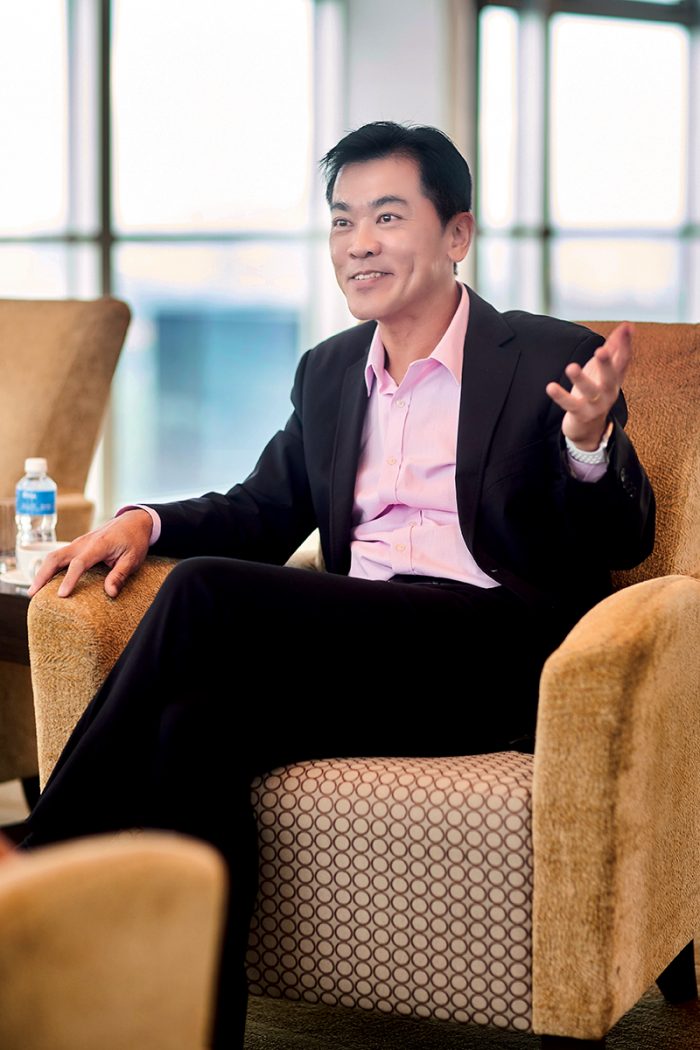PSA’s Southeast Asia CEO on maritime workforce challenges
In Leaders Talk HR, HRM Magazine Asia sits down with C-suite movers and shakers to talk HR and leadership.

Older generations of Singaporeans will remember PSA as the Port Authority in Singapore, an icon alongside the likes of Changi Airport and Singapore Airlines.
But what was then an acronym, is now simply a legacy of its humble beginnings as a state organisation – PSA has been an independent commercial enterprise for more than 20 years now. These days, it is a world leader in port operations – managing 40 different terminals across 16 countries.
“We were corporatised in October, 1997, but we held on to the three-letter name – PSA – because of the branding,” says Ong Kim Pong, PSA’s Regional CEO for Southeast Asia. “Over the years, we had built up immense capabilities, and also a high level of trust with our customers.”
Interestingly, Ong – who joined the company at the turn of the millennium as a senior operations research officer – admits that he didn’t have high expectations for his journey with PSA to begin with.
“When I first joined PSA, I gave myself five years. I didn’t think I would stay more than that. That was 21 years ago,” he admits. But having seen the company grow from strength to strength over the last two decades, he is eager to see how it continues to transform to meet the challenges of a new era.
“Transformation is why PSA is what it is today. It’s why we have kept our strong brand, and our rich culture,” Ong notes.
That branding and culture cascade across all levels of the company, including in its recruitment processes.
“We believe everyone makes a difference, whether you’re in the frontlines or the backend,” he explains. “As we try to attract young people to be part of the company, it’s about believing in what each individual can contribute to the organisation – and how the organisation can, in turn, harness each person’s potential.”
Ong, who is fond of using analogies and metaphors to bring his point across, is quick to liken the running of an organisation to that of an orchestra.
“A good organisational culture is actually a collection of individual voices and thoughts. And like an orchestra, if each person plays their role well, and if everyone is synchronised, they can produce a beautiful symphony. Whereas if people aren’t in sync, the whole note breaks – and when that whole note breaks, the whole symphony breaks,” he says.
“Everybody has a role, everybody makes a difference.”
“It’s about believing in what each individual can contribute to the organisation – and how the organisation can, in turn, harness each person’s potential.”
– Ong Kim Pong, CEO, PSA Southeast Asia
State of the industry
HRM Asia: What are some of the key business challenges that PSA is grappling with right now?
Ong Kimg Pong: The big ones are labour competition, a general increase in labour costs in this part of the world, and technology.
How is PSA approaching the technology challenge in particular?
Technology actually can enable processes, so we’ve been exploring it for a while. Automated vehicles are a good example – if we can convert automated vehicles to handle transport of containers, we can reduce our dependency on drivers. Over the years we have actually been finding it more and more difficult to find those drivers anyway, partly due to competition from Uber and bus companies.
So even though technology might be a high investment to begin with, if you consider the operational costs spread out over the lifespan of each development, it’s substantially less.
What trends are currently impacting the shipping industry?
There are three emerged trends, as well as three emerging trends.
One emerged trend is actually the presence of mega vessels. When I first joined, we used to see big vessels of, say, 300 meters and 6,800 TEU [twenty-foot equivalent units; commonly used to describe the capacity of container ships and container terminals].
That was really the biggest vessel we ever saw some 20 years ago. It was the workhorse serving the maritime distance from Europe to Asia. Fast-forward to today, these 300-meter vessels are just serving within Asia and much bigger vessels have emerged.
Now, we are seeing 400-meters-long vessels and each vessel is now in the capacity of 18,000 to 20,000 TEUs. And just to give you a scale – one TEU can actually store 15,000 pairs of nice shoes like what you’re wearing today!
So can you imagine 20,000 TEUs on a vessel?
That’s a lot of shoes! So everything has become bigger?
Yes, vessels have upsized to mega vessels. That’s the first ‘M’.
The second ‘M’ would be the mega alliance. Again, to rollback 20-plus years ago, we had around 20 shipping lines holding about 80% of the market. Today, we have only three major alliances: 2M, THE, and Ocean Alliance, altogether taking up nearly 90% of the world market.
Serving alliances versus serving the shipping lines is very different, because mega alliances have a lot more interconnectivity requirements.
The third ‘M’ is the merger and acquisition activity – in the last three years, we’ve had what I call “Five Weddings and a Funeral”!
One wedding was when the CMA-CGM shipping group acquired American President Lines. Meanwhile, the funeral was for Hanjin Shipping [a South Korean container transport company] which was declared bankrupt early last year, partly due to very steep competition within the shipping industry.
The three emerging trends, are what I refer to as the three ‘C’s. These are still emerging and playing out, but all very much related to demand management change.
The first ‘C’ is eCommerce, which is high mix and low volume, compared to the “good old days” when production lines used to provide the same kind of goods en-masse.
The second ‘C’ is connectivity. The world has actually grown smaller in this sense, and consumer behaviour traits have changed. With the mega vessels and mega alliances, there’s a need for a lot more consolidation and connectivity from one end to the other.
Because people want to know where their goods are at any time?
Yes – tracking and tracing has become very important for consumers.
The last ‘C’ is the creation of disruptive technology. For instance, the ways Uber has affected taxi drivers, or how Airbnb has affected hotel chains and hotel booking systems.
How do these trends then alter your workforce approach?
I’m a hiker, so I’m going to use hiking as an analogy.
In preparation for a good hike, we have to understand the weather conditions, and so on. So similarly, our staff have to understand that the objective is to ‘reach the summit’: to be the best in the world; to be a world-class organisation.
So first of all, we need to have a clear objective, and to communicate it.
Secondly, we need to identify the potential hazards: the trends, the challenges, and so on. These have to be identified because if anyone is not careful, they could end falling off the path.
So it’s important to identify them early, and then prepare with handrails and guides. You can’t just say, ‘Hey, let’s go to the summit. Do your best!’
Training and skills upgrading are very important, because not everyone may be fit enough for a hike. We need to train them for the journey.




